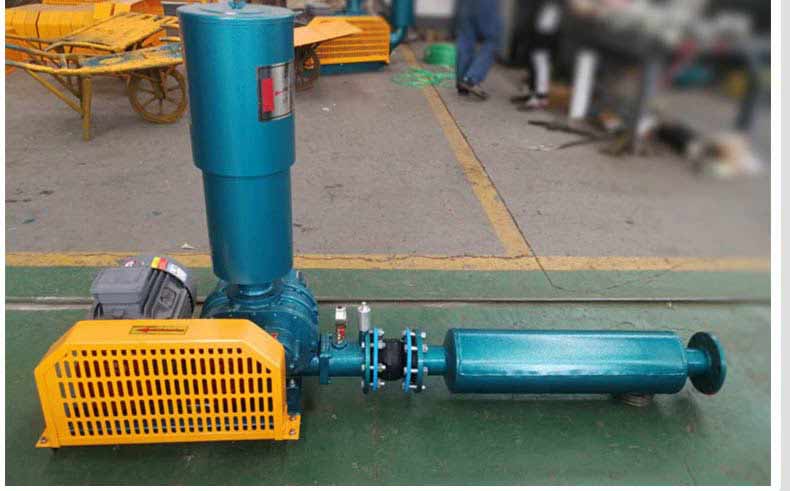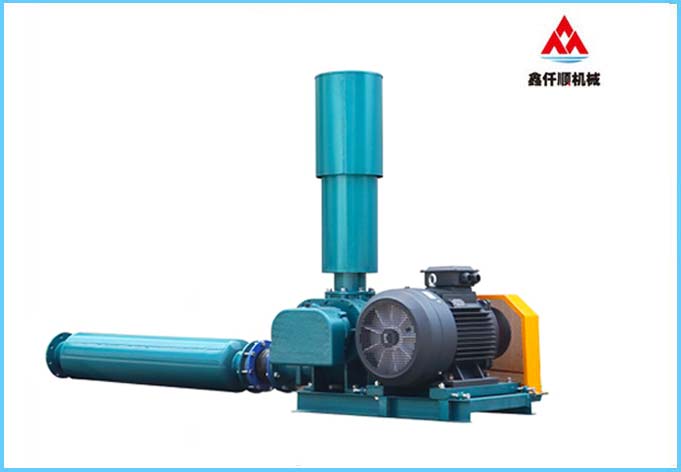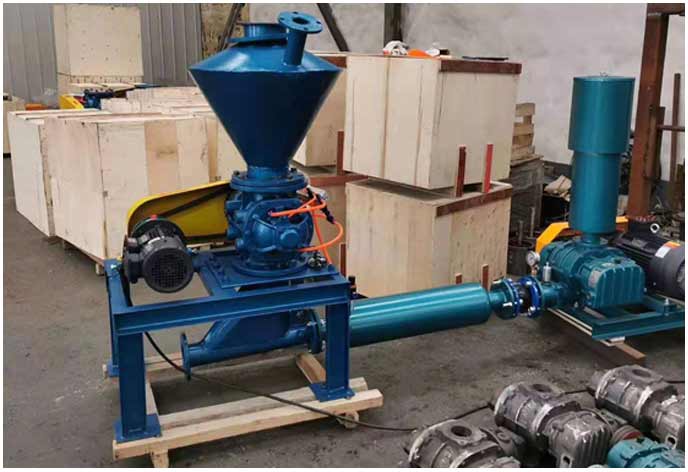The rotating speed of roots blower determines the service life of roots blower. Because of the wear problem of the rotor and casing of roots blower, the roots blower with the same parameters and different rotating speeds and slow rotating speeds will surely have a longer service life than the blower with fast rotating speeds. Then comes the wind speed (flow): when the casing volume is the same, the fan with fast speed must have greater flow than the fan with slow speed. Therefore, when selecting Roots blower, we try to fix the rotation speed of Roots blower to meet our needs.
There are two transmission modes of Roots blower: direct connection and belt connection. Belt transmission is usually used, because the speed of the directly connected Roots blower is synchronous with the speed of the motor, while the speed of the ordinary 4-stage motor is 1470 rpm, and the cost of selecting other stages of motor is high, so people generally choose 4-stage motor, The belt drive is economical and durable.
V-belt transmission is faced with this problem. How to calculate the difference between the rotational speed of Roots blower and that of motor? The following formula can be used to calculate: motor speed * motor speed=fan speed * fan speed
It is not difficult to see from this formula that as long as the size of the Roots blower pulley is constant, and the rotation speed of the Roots blower can be found from the instructions through the requirements of the flow and pressure parameters, the rotation speed of the Roots blower is also fixed, and the rotation speed of the motor is also constant, then it is easy to calculate the size of the motor pulley.
The rotating speed of Roots blower depends on the size and model of the blower. Small fans can rotate at a higher speed, mainly because of the accuracy of the dynamic balancer during the production and manufacturing of the blower. The higher the accuracy, the higher the rotating speed. However, the accuracy of the dynamic balancer is limited in the world at present. All large fans have a lower rotating speed, and small fans can rotate at a higher speed. When selecting the fan, it is better to select medium and low speed to avoid high speed, so as to prolong the service life of the fan. Generally speaking, the fan speed below 1 ton should be below 2000 rpm, the fan speed above 1 ton should be controlled at 1000-2000 rpm, and the fan speed above 200 diameters should be below 1000 rpm.
1. High speed and high loss
When the impeller rotates rapidly, it will produce great wear. The higher the speed is, the higher the loss of the impeller is, the lower the service life of the fan will be.
2. Effect of rotating speed on seals
High speed will also affect the seals, and the damage of the seals will affect the normal use of the fan. Especially for media such as special gas, there may be other dangerous faults.
3. Risk of damage
For Roots blower at high speed, there will be more risks. For example, some small particles are stuck in the middle of the impeller. Because of the high speed, the momentum is large. Once there is a jam, the fan motor may burn down.
In terms of speed and model size, we generally recommend a slightly larger fan to avoid using a high speed roots blower. After a long time of use of high speed roots blower, the risk of failure is higher.
If we specify the need to use a high speed fan in our working condition, you can find us to customize it according to your technical parameters. We will propose our own solutions to the problems existing in this high speed fan.
I believe that after reading the above, you should also know how to judge the speed of Roots blower. I hope it will help you.
Text label: Roots blower
Link to this article: //wuhanzhcs.com/html/news/n02/682.html










